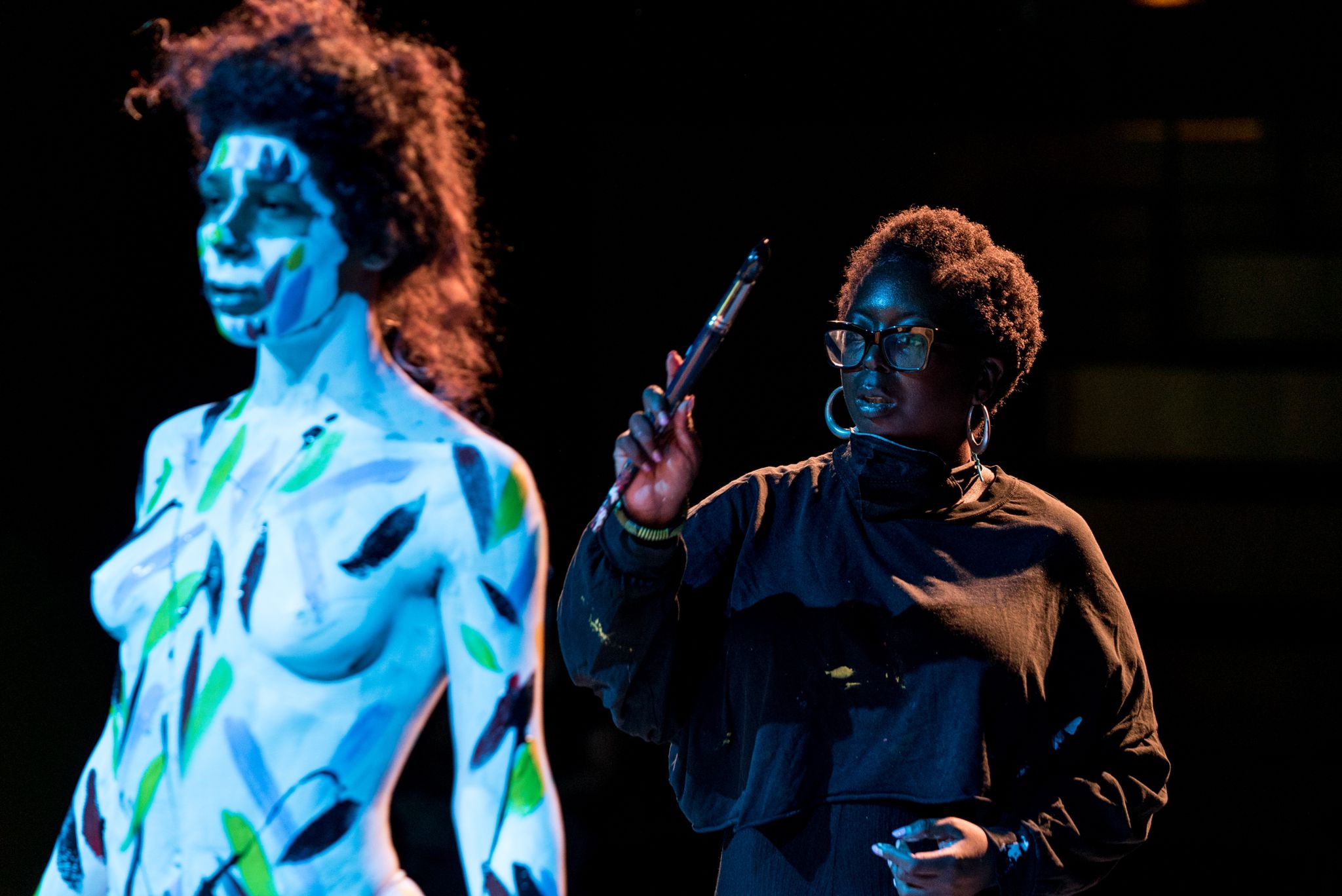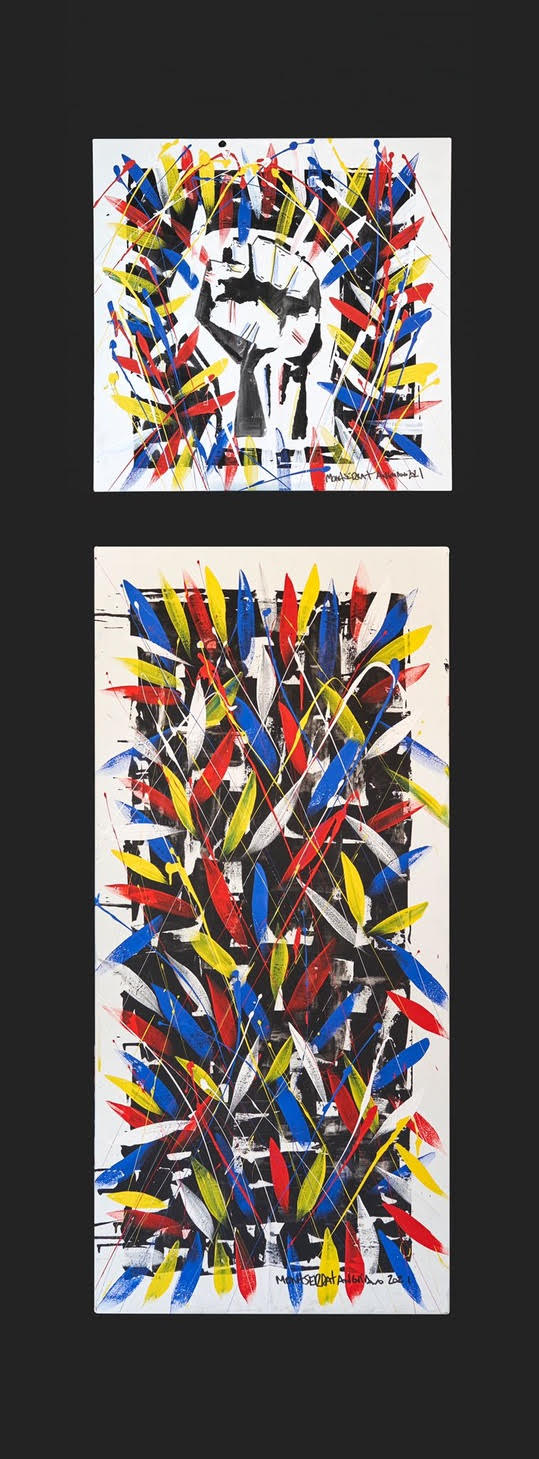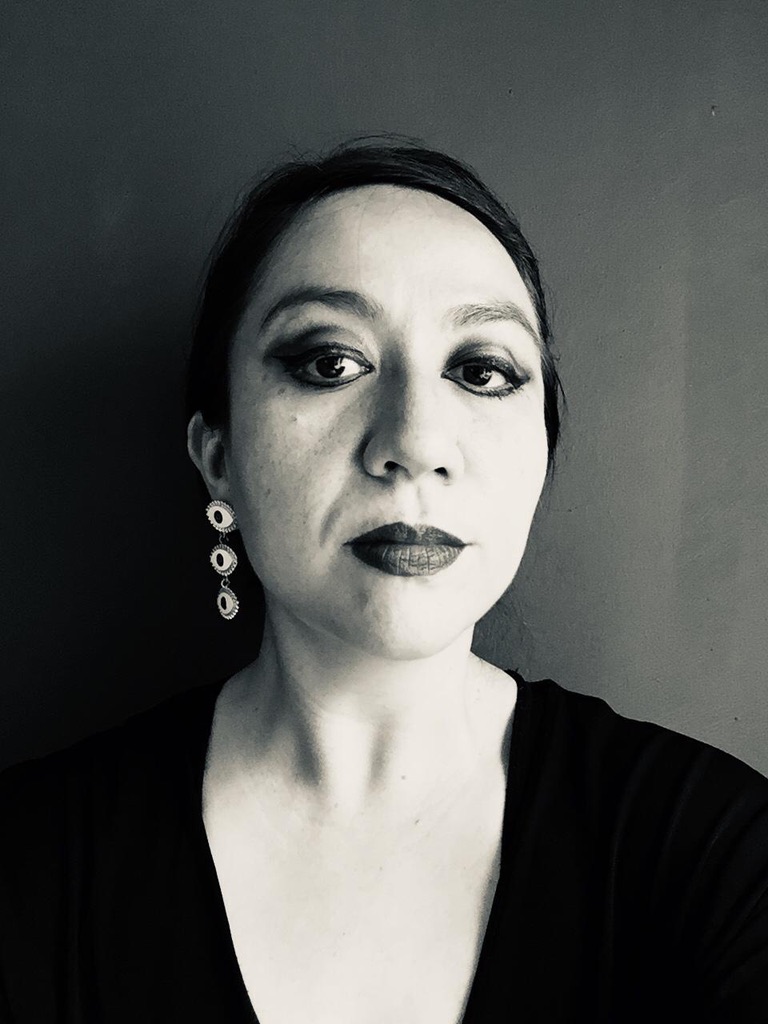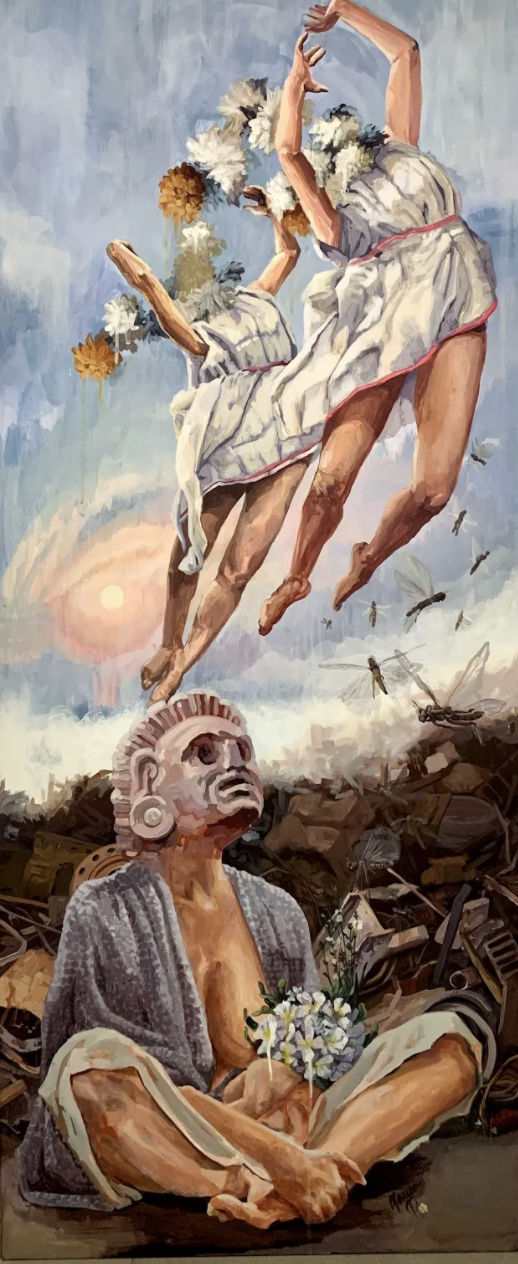This piece kicks off a series of conversations with artists whose work will be featured in the upcoming Boundless Space, The Possibilities of Burning Man auction catalogue, which launches September 20, 2021. Astonishing work by these artists, many of whom emerge from underrepresented communities around the world, will go on auction September 30 to October 8, 2021. Proceeds from the Boundless Space auction will support participating artists, and Burning Man Project.
On hearing the name Boundless Space, many of you will picture the open playa, that vast landscape upon which artists install mind-blowing works of art. In the context of the charitable online auction we’re co-producing with Sotheby’s, Boundless Space evokes realms well beyond the desert, reaching artists, communities, and traditions that are just beginning to intertwine with our vibrant global community.
To build the catalogue for Boundless Space, the Possibilities of Burning Man, we ignited a global network of collaborators who set to work finding remarkable artists whose vision and work aligns with the Burning Man spirit. Through this, Boundless Space has also come to represent the collaborative possibilities of Burning Man culture, and the opportunities we can create for artists whose work has, until now, existed largely outside the global art scene.
First up, we’re sharing stories from Querétaro City artists Víctor López, Tania Quezada, and Luis Sánchez, as well as Barcelona artist Montserrat Anguiano. Each artist emerges from a different creative and cultural tradition, creating work that coalesces around themes of belonging, cultural identity, and migration. We’re grateful for the curatorial expertise and on-the-spot translation from Auction Committee member, Nueve Arte Urbano founder, and dedicated Burner Édgar Sánchez, who made these new collaborative relationships and our conversation possible.
Víctor López

Víctor López’s plastic work explores the identity and cultural roots of the Zapotec people, and proposes a way to rebuild from migration, hybridation and the social and historical context. He has participated in more than 60 national and international group exhibitions, bringing his work to Estonia, Uruguay, Sweden, and the United States. Victor has been part of Nueve Arte Urbano in projects such as Mextonia, Mexpania, and Vergüenza o Paz.
“My whole family is indigenous from Oaxaca, from the Zapotec people. My parents migrated from my community to México City, so we could not live a true Zapotec culture, and felt alienated by the ways of the urban society.
“My encounter with art was very organic — in the city by doing graffiti, but also living within a Zapoteca family. This is how I got in touch with drawing and color. I now understand that my art is intimately connected with my family, my culture, my migration, my neighborhood, and la Tierra — the living Earth.
“I started expressing about my family and myself, but then realized that I was speaking for many Mexicans and many people around the world — because migration is global and all families have a migratory background. My stories are about my ancestry and my grandmothers, my grandfathers, my heritage, my languages. This is the way that I can find myself through them… understanding that, somehow, we are all migrants, all ‘mestizo’.
“Recently I understood why I am doing so many engravings. I know now that I am carving into the wood with my engraving tool like my grandfather would do with his plow in mother Earth.

“I can see a very strong light of hope coming out of Burning Man. So, the piece that I donated to the auction is about light, it intends to give light to the public. I want to share the splendor of a reborn sunlight spreading to all of us, especially when the day starts, the sunrise, but also from the mystery of nocturnal sun inspired by the concept of Tezcatlipoca.
“I wish for the awakening of consciousness to bring respect to nature — understanding we are nature, we don’t own nature. The sun is the place where all energy comes from, and he fertilizes the Earth and ourselves as part of her, so we become a whole system: sun, Earth, us, life, so that we can roam and mix for eons upon the globe.”
Montserrat Anguiano

Montserrat Anguiano is an Afro-Catalan artist who expresses herself through various disciplines, including visual and plastic performance, poetry, and painting. As a feminist and anti-racist activist, Montserrat’s work focuses on women of African descent, defending female empowerment through art. Her poetry is about the sensuality and femininity of bodies — feigned, tangible and imaginary love. She works on walls and bodies, perfect canvases to give dynamism to what is static.
“I am from Catalonia, Spain, so I self-identify as Afro-Catalan, not Afro-Spanish. I have been working on art since 2001, and have been particularly active since 2015 presenting my work. There was a turning point when I stopped doing decorative art and went deeper.
“This changing point was my own decision to work into my own identity as an Afro descendant. I looked for references in other Afro-descendant women, which are not easy to find in Spain, and particularly in Catalonia. I wanted to speak about the process of empowerment in Afro-descendant women through my own body. So there’s a social and a political aspect to my work. I want to fight and I want to protest and I want to express my opinions with strength.

“‘God Is a Black Woman,’ the painting I’m contributing, is a diptych. I always paint women from African descent. In this case, I wanted to express this power and to connect with the movement.
“I was born in Barcelona; 30 minutes later I was adopted by a white Catalan family. I’m the daughter of the roads, the daughter of the path, because I live in sort of a limbo, in a place where I may not belong. This is why I use the three primary colors and shapes in the scale of grey to express a duality with myself in the middle, but also outside of everything.
“It is ourselves, Afro-descendant women, who must be speaking about ourselves. It’s a very good and empowering opportunity from Burning Man to invite us to speak about these things. Beyond being Black or Afro-descendant, we must speak about any other subject. It’s great to be included in speaking about ourselves, but if there are other opportunities to speak about other subjects, then Black or female artists must be included also, regardless of the subject.”
Tania Quezada

Tania Quezada studied art at the Instituto Allende, in San Miguel de Allende Guanajuato. Her work derives nourishment from the real and the magic in a chaotic quest for meaning and identity. “A collection of characters, all of them quite strange and magical, take turns to come out of my mind and into the canvas.” She has been part of Nueve Arte Urbano in projects such as Mextonia, Mexpania, and Vergüenza o Paz.
“I decided to study art because it allows me to interpret what’s going on inside my mind and my vision of the cosmos… those things that are intangible, and that through art, we can turn into tangible concepts.
“For me as Mexican, with so many native cultural influences, it’s easy to feel I don’t belong anywhere. My mother is from the north. My father is from a little town close to Querétaro. They are all from different cultures, but thanks to my art, I always find myself belonging somewhere. I feel like I can take all of these different myths, legends and characters of my country, and portray them in my own stories. I like to create my own mythologies.
“So in my work I always try to incorporate some kind of world of my own that I can understand, and that other people can understand if, like me, they don’t feel they really belong somewhere. Colonization made it impossible to grow up with deeply-rooted traditions in indigineous peoples’ cultures, because they were destroyed. It’s now a mix, a mestizo culture. So I always try to tell these new stories. It’s kind of a neo-mythology, inspired in the Mexican mestizo tradition that gave birth to the magical realism of Latin American literature.

“My piece is called ‘Flowers of Chaos and Desert’ because I always felt like making something beautiful in a place where nobody thought it would be possible. I read somewhere that art is not essential work according to some authorities. Because of the pandemic, they thought that we don’t need art, we need doctors and we need other stuff. So when I read that, I thought, well, you need to restore humanity somehow. Art restores humanity.
“And that’s why I think we’re all connected in this, holding it and making something despite the circumstances. That’s something I really find lovely in Burning Man. We’re all making something out of nothing.”
Luis Sánchez

Luis Sánchez studied art at the school of Bellas Artes at the Universidad Autónoma de Querétaro. His artwork is in public and private collections in México, the United States, and the United Kingdom. He is an experienced teacher and has a trajectory as communicator, producer, and gallery director. He has been the curator of Nueve Arte Urbano, producing urban art festivals such as Mextonia, Rex, and Miscelanea Cultural. His work explores hypercomplexity, and the mystic of female energy.
“I’m from Querétaro, which — like many places in México — has its own way and identity. It’s one of the cities in the whole country that is more conservative and Catholic. So we have a lot of churches, which is the first thing I saw as a reference in art. You enter a church and you see these images of torture, and references to guilt, shame, and glory.
“As I grew, I came to understand what the process of colonization implied. There are a lot of communities that still have their way of performing rituals based on pre-Christian traditions. I could relate to them because there’s a hidden part, dark and obscure, of the city of Querétaro, which is loaded with magic and mystery. I became really interested in that. So I trained myself to find the symbols and express outside of the mainstream, logical way for society to function.

“The piece I am donating to the auction is very special to me because of the moment of turmoil in our society that collapsed last year. I mean, we saw the news about riots, the quest for social justice, and the tragedy of repression. I think an essential part of that is race and culture, but also women. I think the female part of history is at a boiling point and we all have to look into what is going on.
“So my altar piece is composed of a two-part idea about motherhood. When you have a moment of agony and pain, what do you think about? Maybe family, maybe your mother, right? Just like the mothering moment that happened with the spark of the Black Lives Matter movement.
“I think we all should inject our own themes into the bloodstream of world art. This is a huge opportunity to make a couple of heartfelt statements inspired by the Burning Man ethos. I can’t imagine a better opportunity than this.”
• • •
Learn all about our collaboration with Sotheby’s to produce a charitable online auction in our June 2 announcement.
Cover image of “The Ramblers” by Víctor López



Reminder: Burning Man Project has a responsibility to maintain this space for the benefit of all participants, to ensure that comments serve to enhance the experience of our visitors, rather than cause harm. While spirited conversation is welcome, unruly and rude behavior is not. Posts that are harmful to others or run counter to the spirit of civil discourse may be removed.
Please review our COMMENT POLICY here, then comment with care: https://journal.burningman.org/comment-policy/
Report comment
I’d be honored to donate one of my Black Rock Portrait Project Paintings (I am a professional realism figurative painter with a decent following and would be happy to share with my colletor’s group to help the cause as well). Please let me know if I can help.
Report comment
Comments are closed.